- What is a Product Detail Page (PDP) in Ecommerce?
- What are the Components of PDP in Ecommerce?
- 1. Product Title
- 2. Product Images or Videos
- 3. Product Description
- 4. Price
- 5. Product Specifications
- 6. Availability and Stock Information
- 7. Customer Reviews
- 8. Product Ratings
- 9. Call-to-Action (CTA) Buttons
- 10. Shipping Information
- 11. Return Policy
- 12. Related Products or Recommendations
- 13. Social Sharing Buttons in PDP in eCommerce
- 14. Size and Color Options
- Why is PDP in Ecommerce Important?
- Why is PDP used in Ecommerce?
- Final Thoughts on PDP in Ecommerce
- FAQs About PDP in Ecommerce
What is PDP in Ecommerce and Why It Matters?
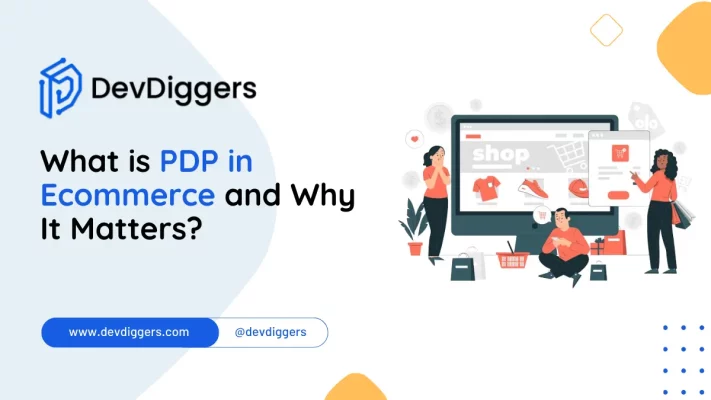
- What is a Product Detail Page (PDP) in Ecommerce?
- What are the Components of PDP in Ecommerce?
- 1. Product Title
- 2. Product Images or Videos
- 3. Product Description
- 4. Price
- 5. Product Specifications
- 6. Availability and Stock Information
- 7. Customer Reviews
- 8. Product Ratings
- 9. Call-to-Action (CTA) Buttons
- 10. Shipping Information
- 11. Return Policy
- 12. Related Products or Recommendations
- 13. Social Sharing Buttons in PDP in eCommerce
- 14. Size and Color Options
- Why is PDP in Ecommerce Important?
- Why is PDP used in Ecommerce?
- Final Thoughts on PDP in Ecommerce
- FAQs About PDP in Ecommerce
In the massive world of online purchasing, there’s PDP in eCommerce. PDP stands for Product Detail Page, similar to an online product presentation, highlighting all relevant facts such as features and specifications.
Whether you’re a seller looking to make your products seem nice or a buyer wanting to know everything about what you’re purchasing, understanding PDP is essential.
In this article, we’ll look at what PDP in eCommerce is all about, why it is essential, what components it includes, and how it influences our online purchasing experiences.
Join us as we learn about Product Detail Pages in the beautiful world of online shopping!
What is a Product Detail Page (PDP) in Ecommerce?
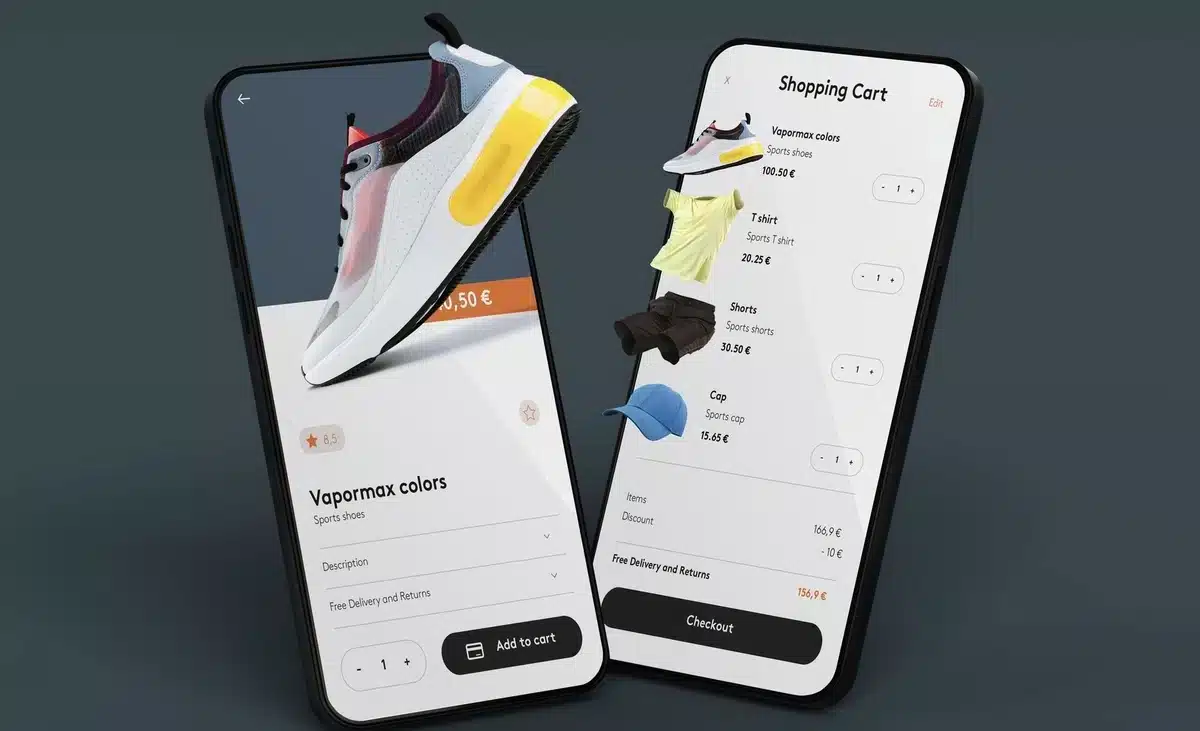
A PDP in eCommerce is like an online brochure specifically designed for a product. It acts as a dedicated webpage providing all the essential details about a particular item available for online purchase.
This digital showcase typically includes images or videos of the product, a catchy title, pricing information, and a breakdown of key features.
Essentially, the PDP in eCommerce serves as a virtual store shelf, offering potential buyers a comprehensive overview before deciding.
For online sellers, it’s a platform to highlight their products, while for shoppers, it’s a valuable tool for informed decision-making with all the necessary information conveniently in one place.
WooCommerce, a WordPress plugin, is used to smoothly integrate with websites while providing extensive product administration, checkout procedures, and more functionality. It enhances the PDP for eCommerce.
What are the Components of PDP in Ecommerce?
PDP in eCommerce typically consists of several vital components that collectively provide a comprehensive product overview. Here are the standard components found on Product Detail Pages (PDPs):
1. Product Title
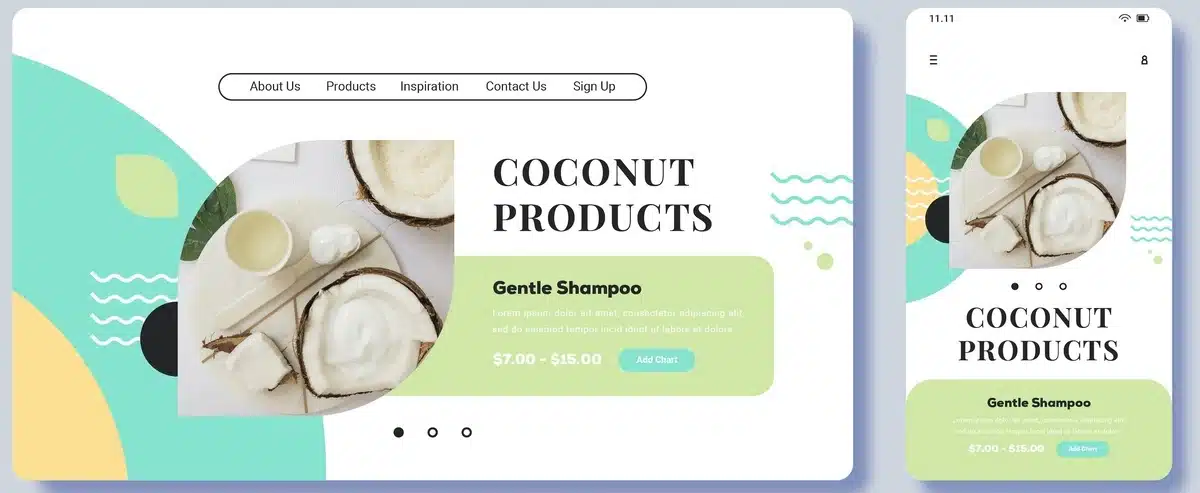
The product title is super important on the PDP in eCommerce. It’s like the name tag for the product, telling you what it is.
A good product title is short and catchy but gives you some critical details about the product.
For example, if you’re looking at running shoes, a good title might be “Comfy Running Shoes by XYZ Breathable and High-Performance.”
This title not only says they’re running shoes by XYZ but also mentions they’re comfy, breathable, and high-performance.
So, the product title is like a quick preview that helps you know what the product is about before you dive into more detail.
2. Product Images or Videos
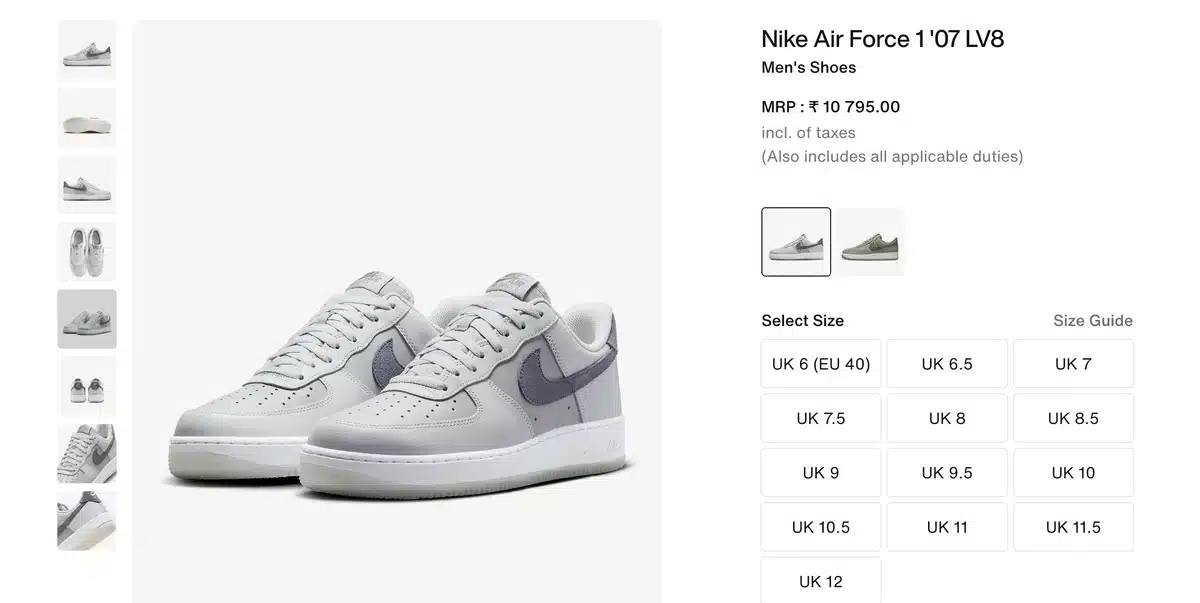
This part is like the show-and-tell section of the product page.
It’s where you get to see what the product looks like. The images or videos give you a close-up view from different angles, showing all the essential details.
If it’s clothes or accessories, you might see pictures of people wearing them.
Good product pages have many pictures; some even have videos to help you better understand how the product works.
These visuals are super important because they help you decide if the product is what you want, from its color to its use.
So, it’s like a sneak peek before you decide to buy!
3. Product Description
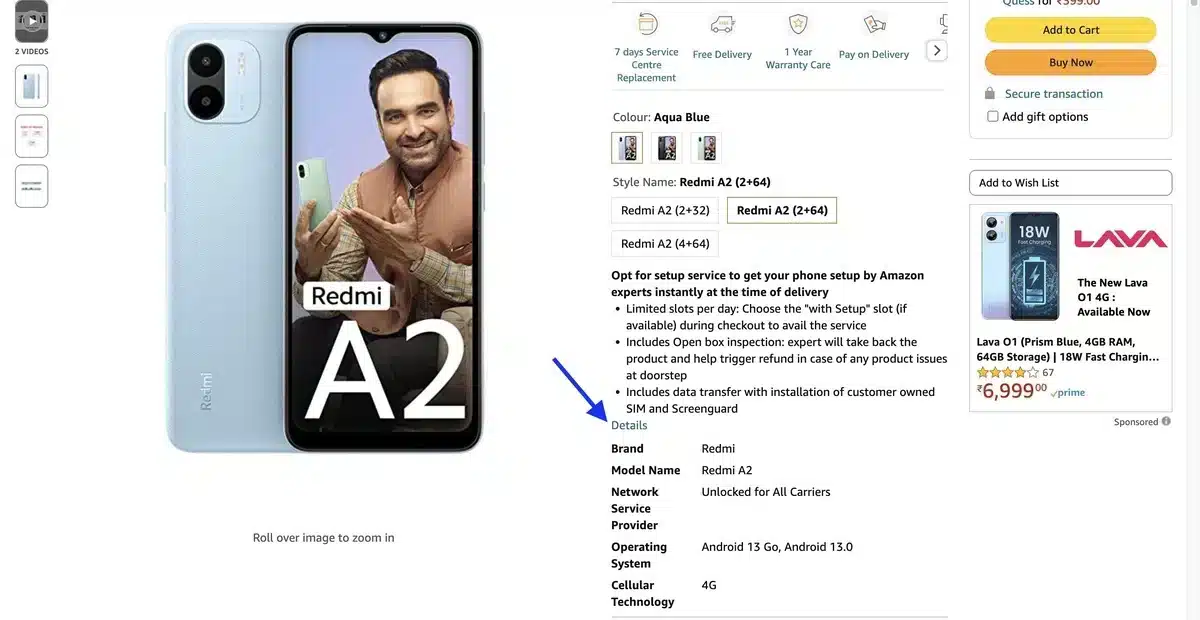
The Product Description on PDP in eCommerce is like a story about the product.
It goes beyond just the name and pictures, giving you more details about what the product can do and why it’s unique.
In this section, you’ll learn about the product’s features, what it’s made of, and why it differs from similar products.
It’s like a mini sales promotion, trying to show you how the product can positively impact your life.
A good product description tells you things, makes you interested, and helps you imagine how the product fits into your daily life.
So, when you read the product description, it’s like getting to know the product better and feeling more confident about whether it’s the right choice for you.
4. Price
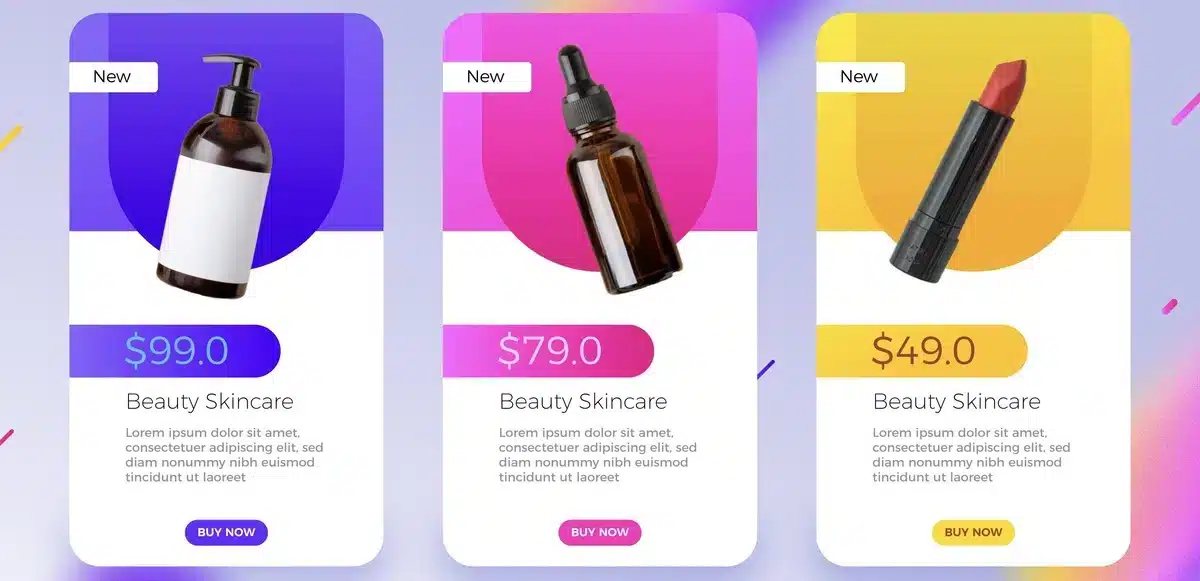
The Price of a PDP in eCommerce is super important. It’s the cost of the product, and you usually find it at the top of the page.
This helps you quickly see if the product fits your budget. Sometimes, the Price part also shows if there’s a discount or special deal so that you can know about any savings.
Some PDPs compare the original price with the discounted one to highlight the deal.
And, to make sure you know all the costs, the Price section might mention things like shipping fees or taxes.
Having precise pricing info is crucial because it helps you trust what you’re buying and decide if it’s the right choice.
5. Product Specifications
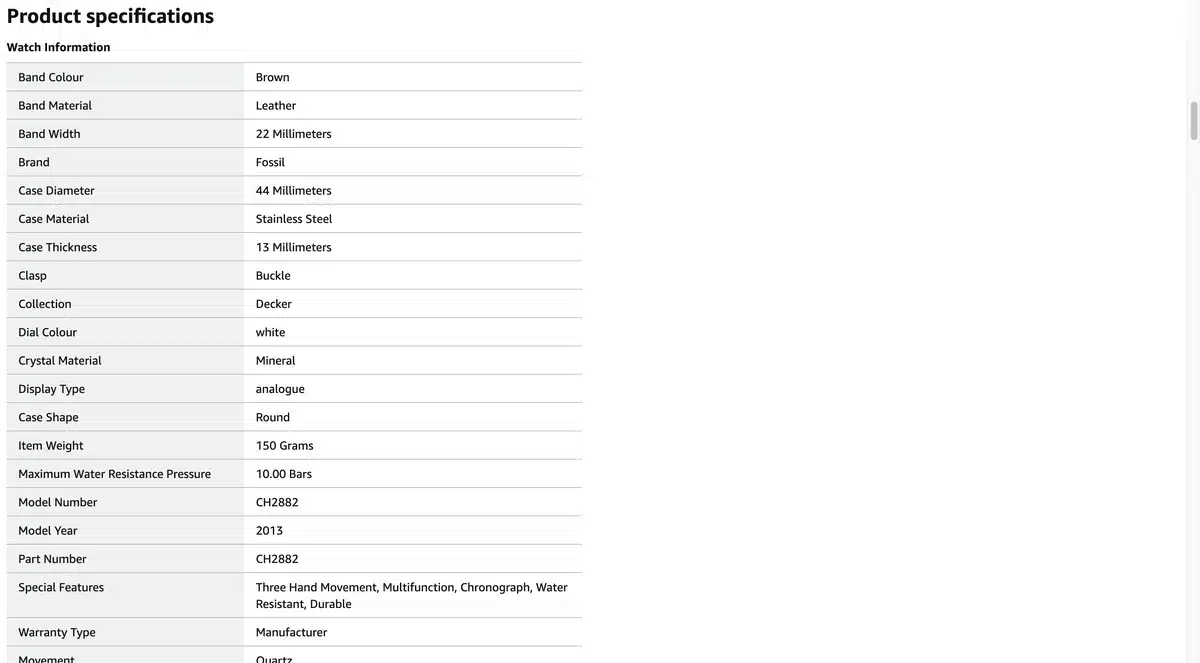
Product Specifications in PDP in eCommerce are like the technical details that give you in-depth information about a product.
It’s where you discover how big or small something is, what it’s made of, or its technical features.
For example, if you’re looking at a phone, the specifications might tell you about its size, storage, processing speed, and memory capacity.
If it’s clothing or furniture, you could learn about size options, fabric details, or how to take care of it.
Having these detailed specifications helps you figure out if the product fits your needs and ensures you know exactly what you’re getting.
It’s like a product’s technical ID card that tells you everything necessary about it.
6. Availability and Stock Information

This part on PDP in eCommerce is like a status update for the product.
It tells you if the item is available or out of stock.
For products running low or with limited stock, it might show how many are left so you know if you need to decide quickly.
This information is helpful because it keeps you in the loop about whether the product is ready.
If something is out of stock, this section might also give you an idea of when it’ll be back or offer a way to get notified when it’s available again.
This information initially helps you plan your purchase and avoids surprises later on. It’s like a little heads-up about the product’s status.
7. Customer Reviews
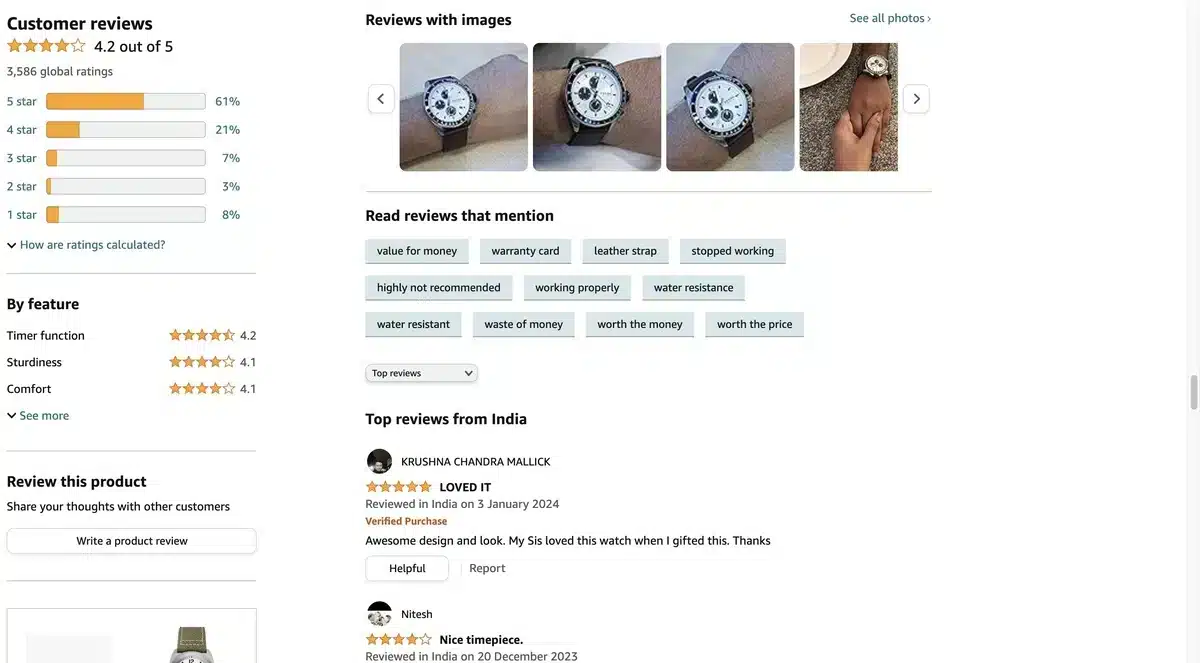
Customer reviews are like stories from people who have already bought and used the product, and they’re super crucial to PDP in eCommerce.
These reviews give you a real-life look at the product’s performance and quality and whether people liked it.
Reading these reviews helps you decide if it’s the right fit when buying something.
Good reviews tell you what’s great about the product and make you feel more confident about buying it.
On the other hand, if there are not-so-good reviews, they can let you know about any problems people face.
It’s like getting advice from others who’ve been there before.
Some reviews even share tips or cool ways to use the product, making them a handy tool for making intelligent choices.
So, when checking out a product online, don’t forget to see what others say about it.
8. Product Ratings
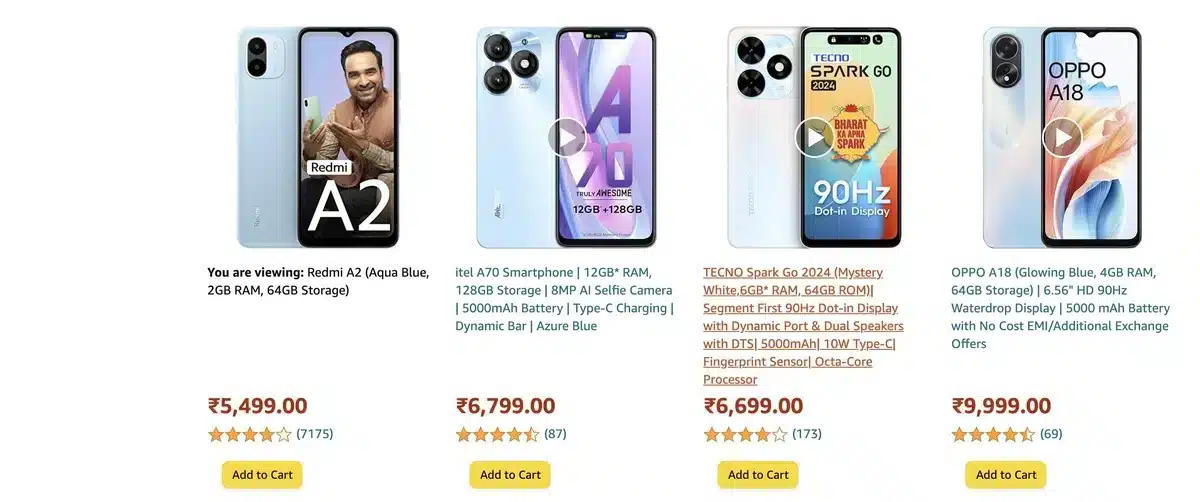
On PDP in eCommerce, you’ll find a section that shows how much people like the product. We call this the product rating.
It’s usually shown with stars, like a quick summary of customers’ thoughts. More stars generally mean people like it.
You can also read what other buyers say in their reviews. If many people say good things, it builds trust and helps you decide if it’s the right product for you.
Sometimes, there might be some not-so-great comments, which is okay as it gives you a balanced view.
Sellers often ask customers to share their thoughts because these reviews and ratings help everyone make better choices.
So, when you see those stars, please take a moment to see what others think. It’s like getting advice from people who’ve already tried the product.
9. Call-to-Action (CTA) Buttons
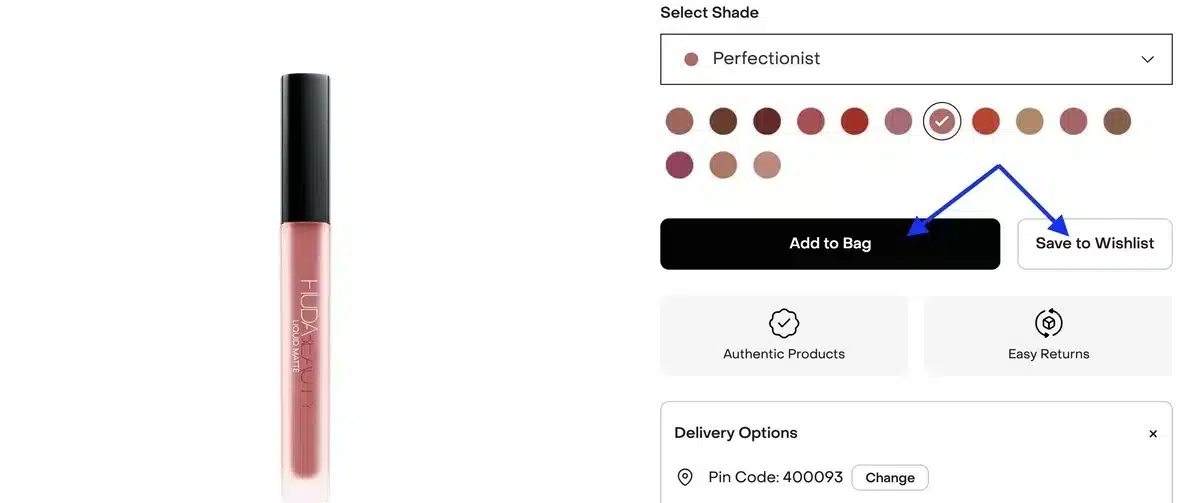
The CTA buttons on a PDP in eCommerce are like friendly guides that help you decide what to do next when interested in a product.
You’ve probably seen buttons like Add to Cart, Buy Now, or Add to Wishlist. These buttons make it easy for you to take action, whether putting the item in your virtual shopping cart, making a quick purchase, or saving it for later.
They’re like the helpers that make your online shopping experience smooth and straightforward.
So, when you’re checking out a product, watch for these buttons to make your life easier and help you get what you want hassle-free!
10. Shipping Information

This part on a PDP in eCommerce is all about telling you how your new purchase will get to your doorstep.
It shares details like the different shipping options, whether regular or faster delivery and gives you an idea of when you can expect your package.
Sometimes, it also mentions any extra costs, like fees for quicker delivery or if there’s a special deal for free shipping.
This section is your guide to understanding when and how your order will arrive, helping you make choices based on how quickly you need your stuff.
Some PDPs might even provide a way for you to track your order so you know exactly where it is on its way to you.
It’s an important part that helps build trust and ensures an excellent online shopping experience.
11. Return Policy
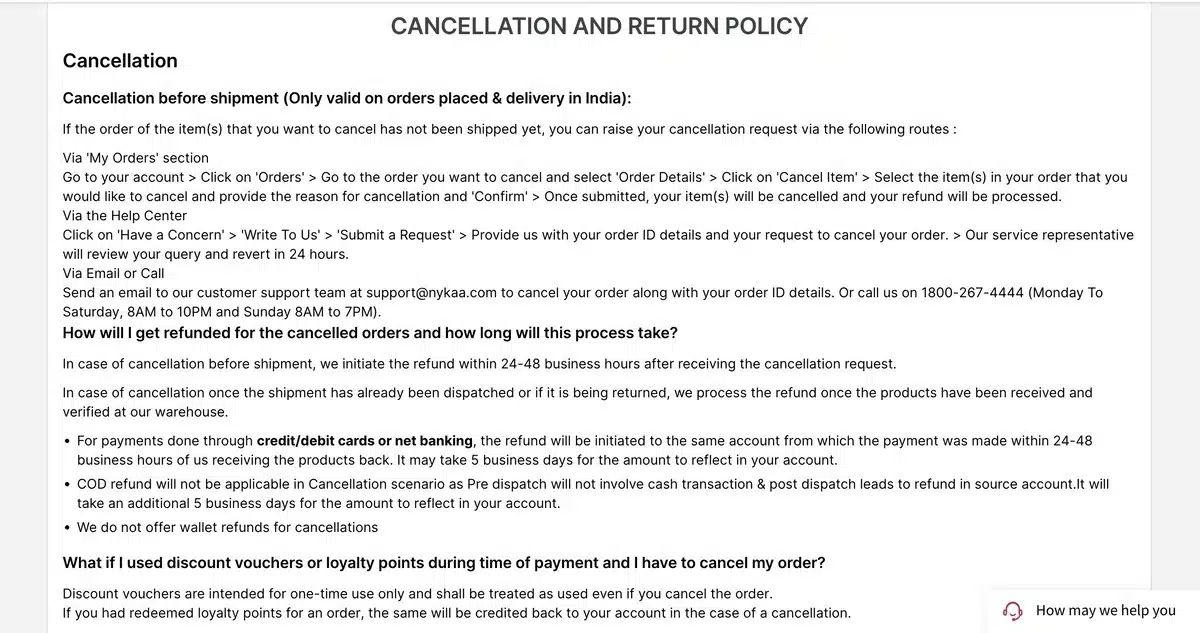
The Return Policy is an essential part of the PDP in eCommerce that tells you what to do if you’re not happy with your purchase.
It explains the rules for returning a product, like how much time you have to return it, if there are any fees, and the condition the product should be in.
Some policies also mention who pays for the return shipping.
Having a transparent and fair Return Policy is like a promise from the seller that they care about making customers happy.
So, before buying something online, it’s wise to check the Return Policy on the PDP in eCommerce to know what to expect in case you need to return or exchange the product.
12. Related Products or Recommendations

The Related Products or Recommendations featured within the PDP in eCommerce significantly enhance the overall shopping experience.
This component is strategically placed to suggest additional products that complement or relate to the one currently viewed by the shopper.
By providing these recommendations, eCommerce platforms aim to guide customers in discovering additional items that align with their interests or needs.
The suggestions are often based on factors like similar product categories, customer preferences, or popular pairings.
The Related Products section is designed to promote exploring additional items and encourage upsells, cross-sells, and overall engagement, contributing to increased average order values and heightened customer satisfaction.
To personalize these recommendations, eCommerce platforms often use algorithms and data analytics, specifying the suggestions to each user’s unique browsing and purchase history for a more targeted and relevant shopping experience.
13. Social Sharing Buttons in PDP in eCommerce
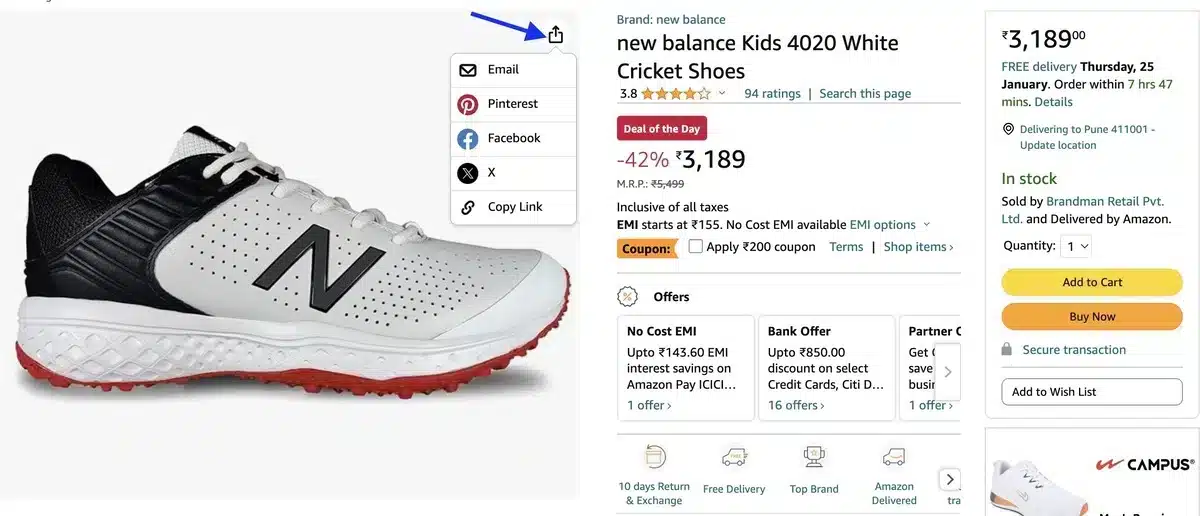
Certainly! Regarding digital marketing, including social sharing buttons on the PDP in eCommerce is a sensible move.
Social sharing buttons are symbols that link to various social media platforms, allowing consumers to share product information with their social networks quickly.
Purposefully positioned, these buttons allow customers to effortlessly extend the reach of a product beyond the limits of an online store.
Users can share the PDP link, images, or product details with a simple click on popular platforms such as Facebook, Twitter, and Pinterest.
This social sharing not only boosts the product’s visibility but also acts as a user-generated promotion using the influence of social networks.
It can potentially increase vulnerability, boost customer engagement, and contribute to the product’s popularity and success within the broader online community.
Furthermore, Social Sharing Buttons within PDP in eCommerce improve a sense of community around the brand, as users actively participate in recommending and supporting products to their social circles.
14. Size and Color Options

The Size and Color Options part on a PDP in eCommerce is like a handy menu that lets you choose what you want.
If you’re buying clothes or shoes, you can pick the correct size from a list of options, ensuring it fits you perfectly.
And if the product comes in different colors, you’ll see samples or pictures to help you decide which one you like best.
It’s a cool feature because it lets you personalize your order and find precisely what you want.
This way, you can ensure the product suits your style and fits just how you want it to.
Why is PDP in Ecommerce Important?
In the world of eCommerce, Product Detail Pages (PDPs) stand out as an essential component for several significant reasons:
- Informed Decision-Making: PDP in eCommerce allows shoppers to provide comprehensive details about a product, enabling them to make intelligent choices based on their preferences and requirements.
- Transparent and Trustworthy: PDPs bring transparency to online shopping by presenting all the facts about a product. This improves trust, assuring consumers that what they see on the PDP accurately represents the product.
- Showcasing Excellence: Functioning as digital store shelves, PDP in eCommerce allows sellers to showcase their products effectively, using fascinating images and exciting descriptions to highlight their features.
- Eliminating Uncertainty: When tension arises about a product meeting expectations, PDPs offer clarity. By providing a clear overview, these pages help buyers understand precisely what they can expect.
- Enhancing Online Visibility: Well-optimized PDPs contribute to the overall online visibility of a product and the eCommerce platform. This optimization can increase search engine rankings, making the product more accessible to potential buyers.
- Simplifying Shopping: A well-organized PDP facilitates the shopping experience, acting as a brief guide that lets consumers quickly evaluate whether a product aligns with their needs.
- Facilitating Product Comparison: PDPs simplify the decision-making process for shoppers torn between multiple products. Allowing for easy comparison of features, prices, and other details in one location aids consumers in making well-informed choices.
- Effective Marketing Tool: PDPs are adaptable marketing tools with shareable links, facilitating promotion through advertisements or social media. These links attract more visitors directly to the product, enhancing the effectiveness of marketing strategies.
In essence, PDP in eCommerce plays a crucial role in making the online shopping experience informative, trustworthy, and efficient.
They provide the necessary information for buyers to make confident decisions, build trust in the purchasing process, and contribute to the overall success of online retail.
Why is PDP used in Ecommerce?
In the realm of eCommerce, a Product Detail Page (PDP) is an essential tool for numerous reasons:
- Information Hub: The PDP acts as a central hub where thorough information about a product is collected. It provides potential buyers with a detailed overview, including features, specifications, and other relevant details, enabling them to make informed purchasing decisions.
- Transparency: The PDP contributes to transparency in online shopping by presenting detailed product information. Shoppers can access all the necessary details about a product before making a decision, enabling trust between the buyer and the seller.
- Visual Showcase: PDPs often include images or videos visually showcasing the product. This visual representation helps buyers better understand the product’s appearance, size, and features, enhancing the shopping experience.
- Comparison: Shoppers frequently compare products before making a purchase. PDP in eCommerce provides a structured format for comparing different products, allowing users to evaluate features, prices, and other details side by side.
- Decision Support: The PDP is a tool to support the decision-making process. Buyers can refer to the product’s details, reviews, and FAQs to address any uncertainties and gain confidence in their choice.
- SEO Benefits: Well-optimized PDPs contribute to an eCommerce website’s overall search engine optimization (SEO). Search engines tend to select pages with relevant and detailed content, potentially improving the product’s visibility and the entire platform.
- Marketing Tool: PDPs are shareable links that can be utilized in various marketing channels, including social media, email campaigns, and advertisements. They play a role in attracting potential buyers directly to the specific product.
- User Experience: A well-designed PDP enhances the user experience by providing a clear and organized presentation of information. Easy navigation and details accessibility contribute to a positive interaction with the online store.
In summary, a PDP in eCommerce is crucial, offering a dedicated space where buyers can access comprehensive information, compare products, and ultimately make well-informed decisions.
It plays a vital role in building trust, supporting the online shopping journey, and contributing to the success of eCommerce platforms.
Final Thoughts on PDP in Ecommerce
To wrap things up, understanding a PDP in eCommerce can make a huge difference in your online shopping experience.
Think of the PDP as a digital guide that gathers all the essential details about a product in one place. From descriptions to pictures and reviews, the PDP helps you make informed choices before hitting that buy button.
It’s not just about seeing what a product looks like; it’s about having all the info you need to feel confident in your decision.
As online shopping keeps growing, the PDP in eCommerce continues to play a vital role, ensuring you’re well-informed and ready for a seamless shopping journey.
FAQs About PDP in Ecommerce
Are there best practices for optimizing PDP in eCommerce?
Yes, optimizing PDP in eCommerce involves using high-quality images, tempting product descriptions, user-friendly layouts, and incorporating SEO techniques to improve visibility on search engines.
What content is typically found on a PDP?
A standard PDP in eCommerce includes product images, descriptions, specifications, pricing details, customer reviews, and other relevant information to provide a comprehensive product overview.
What role does PDP play in conversion rates?
A well-optimized PDP significantly influences conversion rates by providing customers with the necessary details, building trust, and reducing uncertainties that may delay the purchase decision.
How can eCommerce businesses improve their PDPs?
Businesses can enhance their PDPs by regularly updating product information, incorporating customer feedback, utilizing multimedia elements, and ensuring mobile responsiveness for a wider audience reach.
How can small businesses benefit from well-designed PDPs?
Small businesses can benefit by creating a positive first impression, establishing credibility, and improving customer trust through well-designed PDPs, ultimately boosting sales and customer satisfaction.

Kartika Musle
A Tech enthusiast and skilled wordsmith. Explore the digital world with insightful content and unlock the latest in tech through my vision.

Leave a Reply